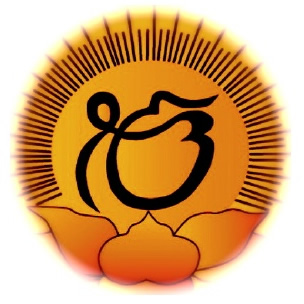| Years ago, my husband's neighbors, Bernice and Louis Martinez, introduced him to a vegetarian, and Native American rice recipe. It's called Sopa Seca, which means 'dry soup'. It's also known simply as Sopa. It's a real family favorite, so much so that Yogi Bhajan even insisted that it be prepared for him when we hosted him at our Florida residence in the early days of 3HO, back in the late 60s. What follows will make at least 12 garlic and onion lovers very happy. Also see Native American Fry Bread. Utensils and Ingredients for making Sopa
Procedural Details
*IMPORTANT: 1) Always crush your garlic and onions using a molcajete bowl or use a food processor in the absence of a molcajete bowl. Just finely chopping the garlic and onions will result in noticeably less flavor. The individual garlic and onion cells must be opened in order to release their Chi or Prana (essence). This can happen only if they are crushed. 2) Use caution if you want to add more garlic. Always err on the side of less garlic. While extra garlic may be desired, you can cross the line whereby a bitter taste results. Large chunks of garlic, onions and tomatoes for more body and color can be added, if preferred.
Cooking Details
Garlic
and onion flavors improve after Sopa sits for a day. Serving Suggestions
For
Best Results
The best way to make Sopa is to crush the garlic, onions and tomatoes using a molcajete (mohl-kah-HEH-teh) bowl and pestle. Of course, a household food processor or finely chopping them by hand are also acceptable, but only if you can't get a molcajete and pestle, which is an age-old Native American-Aztec 'food processor' made of genuine lava rock. 'Molcajete y Tejolote' is the Aztec term for a 'mortar and pestle', molcajete meaning the mortar, tejolote the pestle. The grey-black, rough texture of both pieces is because they are made of natural basalt, i.e., volcanic rock. These are used in the traditional Native American manner for grinding spices, herbs, roots and other edibles. Crushing the garlic and onions in a molcajete bowl is preferred over other methods because processing in this manner adds Chi (life-force). Super Salsa Recipe
1 29 oz. can crushed tomatoes Click
the 'Fullscreen' button in the
Aztec Figures The word molcajete (mortar) derives from Nahuatl, the language of the Aztecs: molli (seasoning or sauce), and caxitl (bowl). The word tejolote (pestle) also derives from Nahuatl: tetl (stone), and xolotl (doll).
Foods traditionally prepared in the molcajete include salsas and mole's (mohl-LAY), as in 'guaca-mole'. It is also used for grinding chilies, garlic, onions, tomatoes or other herbs and spices for many native recipes. The
best quality molcajetes are made from basalt-lava stone with
the lowest possible sand content. This stone can have a very
fine-grain, smooth feel or a very rough-texture. The coarser
textured stone, like the example above,
is hard and makes a good grinding surface. See
instructions below. Both plain and pig-head versions, are inexpensive reproductions cast out of a combination of concrete and crushed stone, or a different type of non-basalt river rock. These continually produce a very gritty residue, and they don't make good quality food grinding pieces. They are typically very shallow so they have a very small hard-to-use capacity. These are used mostly as decorator items, ash trays, planters, etc. Make sure yours is an authentic Mexican, hand crafted, basalt-lava, molcajete..
Curing procedure for a newly acquired Molcajete: With the pestle in hand, grind the molcajete bowl using water as a lubricant. Flush both utensils with water frequently until all surfaces are smooth and free of any gritty residue. The bowl and pestle will retain flavors and aromas of anything crushed with them. The more they are used, the more life-force (Chi) they acquire, so use water only to clean them. CAUTION: Use WATER ONLY to cure and-or clean your molcajete and pestle after each use. Never use soaps or detergents. The accumulated Chi of the herbs and spices will strengthen with time, which will make for increased health benefits. Chi Energy Many
of us these days are aware of calorific content and nutrition
when we prepare our food, but how many of us stop to consider
the quality of the Chi or Prana
we are getting from our meals?
The food we eat varies considerably in the amount of Chi. Factors
such as growing methods, storage conditions, preparation and
cooking methods affect the amount of life-force in our food.
-- Points To Ponder "Let
your food be your medicine, "Nothing
will benefit human health and increase the "In
each and every environment, good DO NOT DO THIS AT HOME, OR ON THE JOB!
"Not
all doctors are healers. Inner Clean Diet I Vegetarian Recipes
Switch To Himalayan Crystal Salt Corporations Are Killing Consumers What Your Optician Needs To Know Another Side of The Soy-Protein Story See What Happens When You Meditate What About PPA (PhenylPropanolAmine)  More Web sites by
KhalsaWebMasters.com
|
|
ABOUT US CONTACT US DISCLAIMER HOME PAGE NEWS AND VIEWS SEARCH UNIVERSITY OF DIVERSITY |